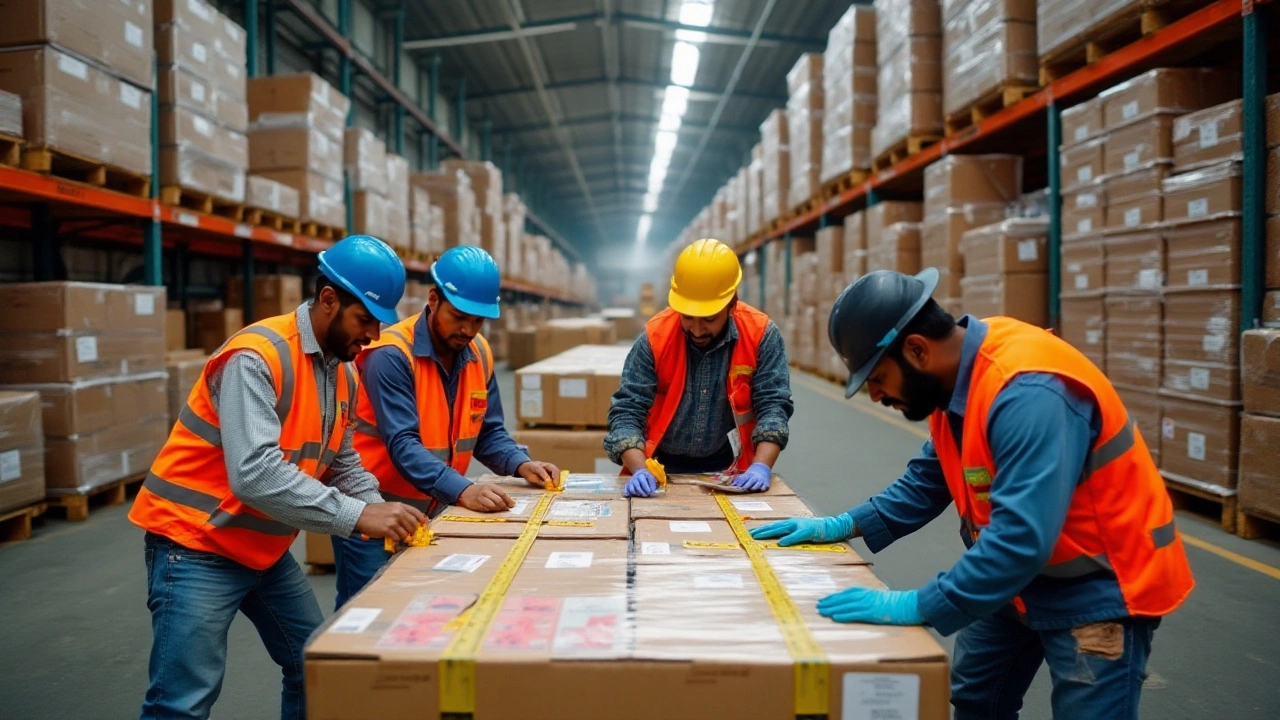Pallet Shipping: What You Need to Know
If you’ve ever wondered why big retailers stack boxes on wooden platforms, you’ve already seen pallet shipping in action. A pallet is simply a flat base that holds your goods, making it easier to lift, stack, and move with a forklift. Using pallets can cut handling time, protect items from damage, and lower transport costs. Let’s break down the basics so you can decide if pallet shipping fits your business.
Choosing the Right Pallet for Your Load
Not all pallets are created equal. The most common types are wooden, plastic, and metal. Wooden pallets are cheap and reusable, but they can absorb moisture. Plastic pallets are lighter, cleaner, and great for food or pharma items. Metal pallets handle heavy machinery parts but cost more.
Size matters too. In India, the standard pallet size is 1200 mm × 1000 mm, but you’ll also see Euro pallets (1200 mm × 800 mm) and custom dimensions for oversized cargo. Measure your product dimensions and weight, then pick a pallet that supports at least 25‑30 % more weight than you plan to load. Overloading a pallet can crush the boxes and cause safety hazards.
Stacking height is another factor. Most carriers allow up to 2.5 m of total height, including the pallet. Keep the load stable by arranging heavier items at the bottom and lighter ones on top. Use stretch film, straps, or corner boards to lock the boxes in place.
Saving Money on Pallet Freight
Shipping pallets can be pricey if you don’t watch the details. Start by consolidating shipments – fill each pallet as fully as possible to avoid paying for half‑empty loads. Ask your carrier for a pallet rate card; many offer discounts for bulk pallets or repeat business.
Consider the type of service you need. Full‑truckload (FTL) shipments are cheaper per pallet when you have enough volume to fill a truck. Less‑than‑truckload (LTL) works for smaller loads but adds handling fees. If you’re moving across states, rail freight can be a cost‑effective alternative, especially for heavy items.
Don’t forget paperwork. A clean bill of lading, accurate weight, and clear pallet IDs help carriers process your shipment faster and avoid unexpected surcharges. Many logistics platforms, including StockOne Logistics, let you generate these documents online and track pallets in real time.
Finally, partner with a logistics provider that understands pallet intricacies. StockOne offers pallet pick‑up, warehousing, and end‑to‑end delivery across India. Their team can advise on pallet selection, optimize load plans, and negotiate carrier rates on your behalf, so you pay less and get goods where they need to be, on time.
Bottom line: pallet shipping simplifies handling, protects products, and can save money when you choose the right pallet, pack it smartly, and work with a reliable logistics partner. Ready to give your supply chain a boost? Contact StockOne Logistics today and let the experts handle your pallets from start to finish.
Is It Cheaper to Ship by Pallet? Real Costs Explained
Wondering if pallet shipping actually saves money? This article breaks down what really goes into the cost of shipping by pallet—from basic fees to hidden charges. Get straightforward advice on when it makes sense to choose pallet delivery, and pick up useful tips for getting the best rates. Whether you’re a small business or just trying to move bulky stuff, you’ll find practical info you can put to use right away.
Read MoreEssential Guide to Amazon Pallet Delivery Requirements
Delivering products through Amazon’s pallet delivery service involves meeting specific requirements to ensure smooth shipping operations. This article explains the essential aspects of preparing for pallet delivery, including size and weight restrictions, labeling standards, and safety protocols. It also highlights some handy tips for efficient packaging and the selection of suitable pallets to avoid common pitfalls. By understanding these requirements, businesses can improve their shipping experience, adhere to Amazon’s guidelines, and ultimately enhance their logistics efficiency.
Read More
